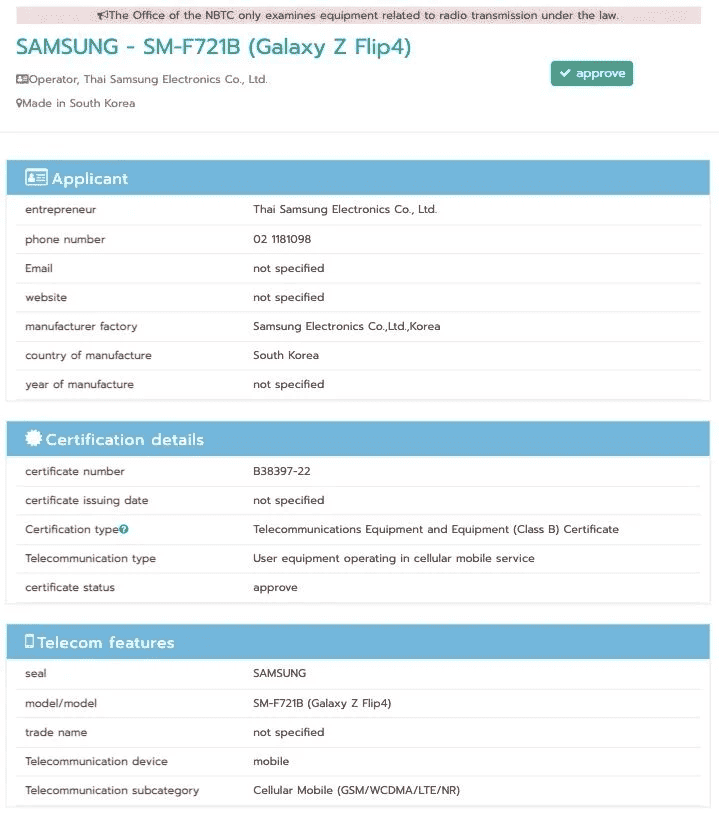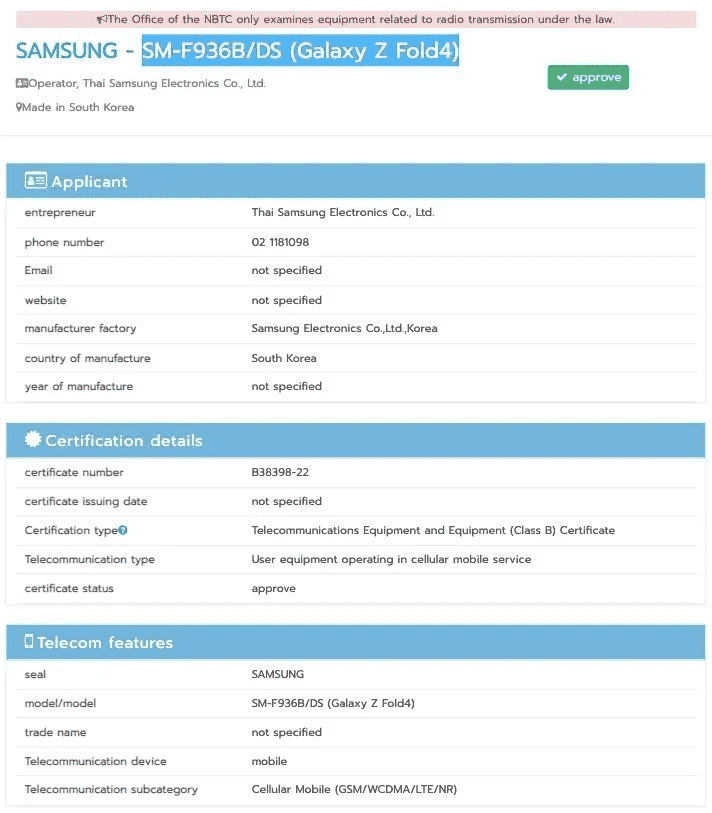South Korean manufacturing giant, Samsung, is working on two foldable smartphones. The company will unveil these smartphones later this year. The latest information on these smartphones is that the Samsung Galaxy Z Fold 4 and Galaxy Z Flip 4 now have Taiwanese NBTC certification. This is coming after these smartphones got FCC certification. Among them, the NBTC-certified model of the Galaxy Z Fold 4 is SM-F936B / DS, and the Galaxy Z Flip 4 is SM-F721B.

Galaxy Z Fold 4 / Flip 4 hardware
As usual, the NBTC certification did not reveal the specifications of the two models. There are reports that the Galaxy Z Flip 4 will use a Snapdragon 8+ Gen 1 processor. This smartphone will also come with 8GB of RAM and 128GB / 256GB of internal storage. Furthermore, this device will also come with a built-in 3700 mAh battery that supports 25W charging and 10W wireless charging. In addition, the Samsung Galaxy Z Fold 4 will come with a Snapdragon 8+ Gen 1 processor. This smartphone will also come with 12GB of RAM and 1TB of storage. Furthermore, it will use a built-in 440 0mAh battery and it is lighter weight than the previous generation.

Samsung Electronics to spin off its foundry business and list in the U.S.
Samsung Securities recently released a report saying that with DRAM sales are declining for two consecutive quarters. The company must diversify its product portfolio in the foundry field. The recommendation is that the company should spin off the foundry division and list it in the United States.
“The macro economy has deteriorated further, and Samsung Electronics’ DRAM capacity utilization rate is declining, which means that consumers’ disposable income is shrinking and their inventory burden is increasing,” the brokerage added. “In addition, global logistics issues may lead to order cancellations…”
According to data from market research institutes, Samsung Electronics’ DRAM sales in the first quarter of this year were $10.343 billion, a decrease of $9 million from the previous quarter. Sales fell for two consecutive quarters after reaching $11.53 billion in the third quarter of 2021. This is related to the continued decline in global DRAM prices, which fell by 9.5% in October last year and 8.1% in January this year.





